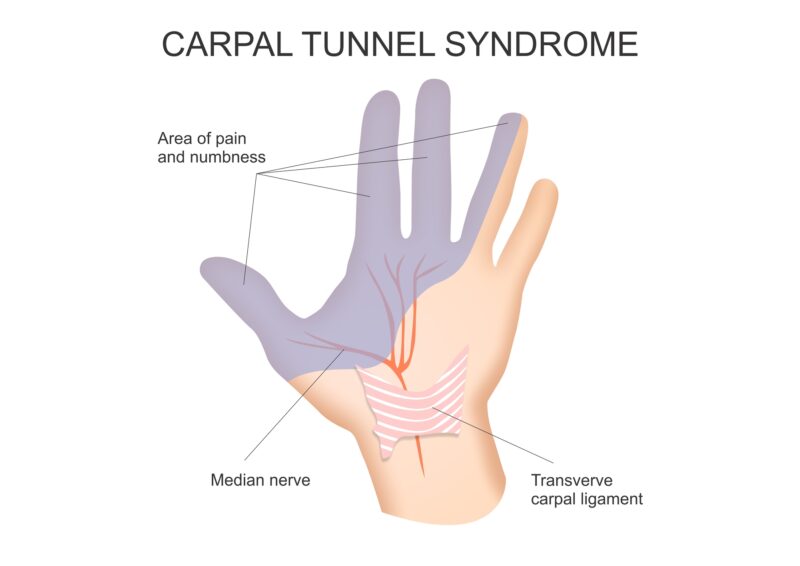The tingling in your hand is worse today. Yesterday it seemed fine and you could shake off the numbness and get back to work.
Icing your wrist and taking anti-inflammatories gave you some relief.
You’ve tried wearing a wrist splint at night, but it’s uncomfortable and makes it tough to sleep.
The good days have been fewer over the last month. You may have carpal tunnel syndrome.
Carpal Tunnel Syndrome
At the base of your hand is a narrow passageway, about one inch wide, called the carpal tunnel. The floor and sides of the tunnel are made up of bones and the top of the tunnel is a strong ligament.
Because it’s constructed of rigid bones and ligaments, the carpal tunnel can’t stretch or increase in size.
The carpal tunnel protects one of the main nerves of your hand.
This nerve, the median nerve, provides feeling to your thumb, index, middle and ring fingers and controls some of the thumb muscles.
The carpal tunnel also protects the nine tendons that bend your fingers and thumb.
If the tendons become irritated or you have swelling in this area from an injury or other conditions such as arthritis, then the space within the carpal tunnel can narrow and pinch the median nerve.
This causes the numbness and pain you’ve been feeling in your hand and wrist.
Carpal Tunnel Symptoms
Most patients’ symptoms usually start out gradually. Here’s how a typical carpal tunnel case begins:
- The numbness and tingling occurred occasionally. It started in your thumb, then shifted to your index and middle fingers.
- Sometimes the numbness moves from your wrist up to your arm, when you’re holding a box, your phone or your tools. The tingling can wake you from a sound sleep.
- Now you’re having trouble gripping and have been dropping objects. It’s more difficult to use the keyboard or cash register at work.
A visit to your doctor, who ordered an x-ray, MRI, or other tests to measure how well your median nerve is working, confirmed you have carpal tunnel syndrome.
Your carpal tunnel symptoms have stopped responding to home treatment and your pain is getting worse.
These may be signs you need endoscopic carpal tunnel surgery.
Endoscopic Carpal Tunnel Surgery Overview
When your symptoms, including the amount of pain and numbness in your hand, become severe, your doctor may recommend surgery to prevent irreversible damage.
The surgical procedure is called a carpal tunnel release and its goal is to relieve the pressure on your median nerve.
During endoscopic carpal tunnel surgery, one or two incisions will enable your doctor to use a miniature camera called an endoscope to see inside your wrist and make a cut to divide the carpal ligament.
This increases the size of the carpal tunnel and reduces pressure on your median nerve.
Most patients see symptoms of carpal tunnel syndrome diminish after surgery.
Recovery, particularly your ability to grip objects, will take time, so you may have to adjust your activities until your strength returns.
An Experienced, Exceptional Surgeon
Making the decision to have any surgery can be difficult. Working with an experienced surgeon you trust can ease your apprehension.
Dr. Kuether has more than 15 years of experience performing minimally invasive procedures like endoscopic carpal tunnel surgery.










